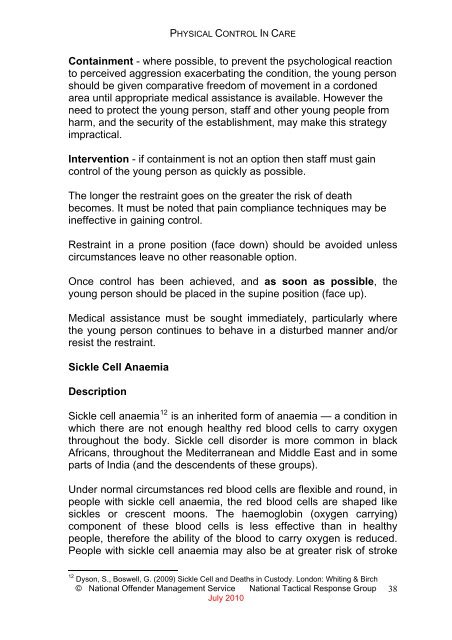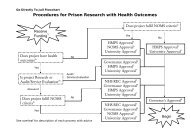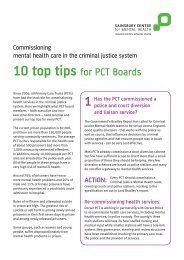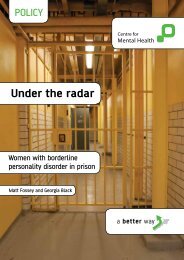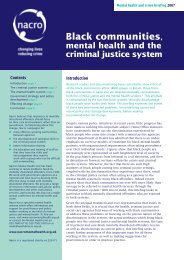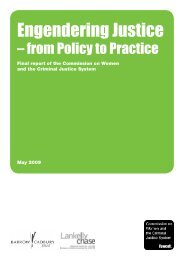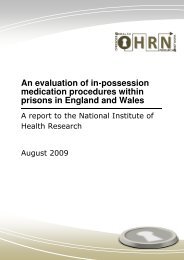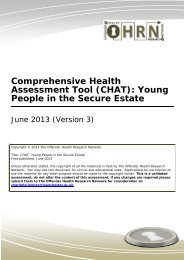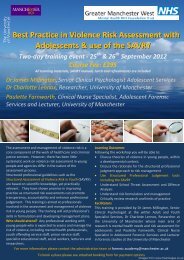Physical Control in Care Training Manual - Independent Advisory ...
Physical Control in Care Training Manual - Independent Advisory ...
Physical Control in Care Training Manual - Independent Advisory ...
Create successful ePaper yourself
Turn your PDF publications into a flip-book with our unique Google optimized e-Paper software.
PHYSICAL CONTROL IN CAREConta<strong>in</strong>ment - where possible, to prevent the psychological reactionto perceived aggression exacerbat<strong>in</strong>g the condition, the young personshould be given comparative freedom of movement <strong>in</strong> a cordonedarea until appropriate medical assistance is available. However theneed to protect the young person, staff and other young people fromharm, and the security of the establishment, may make this strategyimpractical.Intervention - if conta<strong>in</strong>ment is not an option then staff must ga<strong>in</strong>control of the young person as quickly as possible.The longer the restra<strong>in</strong>t goes on the greater the risk of deathbecomes. It must be noted that pa<strong>in</strong> compliance techniques may be<strong>in</strong>effective <strong>in</strong> ga<strong>in</strong><strong>in</strong>g control.Restra<strong>in</strong>t <strong>in</strong> a prone position (face down) should be avoided unlesscircumstances leave no other reasonable option.Once control has been achieved, and as soon as possible, theyoung person should be placed <strong>in</strong> the sup<strong>in</strong>e position (face up).Medical assistance must be sought immediately, particularly wherethe young person cont<strong>in</strong>ues to behave <strong>in</strong> a disturbed manner and/orresist the restra<strong>in</strong>t.Sickle Cell AnaemiaDescriptionSickle cell anaemia 12 is an <strong>in</strong>herited form of anaemia — a condition <strong>in</strong>which there are not enough healthy red blood cells to carry oxygenthroughout the body. Sickle cell disorder is more common <strong>in</strong> blackAfricans, throughout the Mediterranean and Middle East and <strong>in</strong> someparts of India (and the descendents of these groups).Under normal circumstances red blood cells are flexible and round, <strong>in</strong>people with sickle cell anaemia, the red blood cells are shaped likesickles or crescent moons. The haemoglob<strong>in</strong> (oxygen carry<strong>in</strong>g)component of these blood cells is less effective than <strong>in</strong> healthypeople, therefore the ability of the blood to carry oxygen is reduced.People with sickle cell anaemia may also be at greater risk of stroke12 Dyson, S., Boswell, G. (2009) Sickle Cell and Deaths <strong>in</strong> Custody. London: Whit<strong>in</strong>g & Birch© National Offender Management Service National Tactical Response GroupJuly 201038


